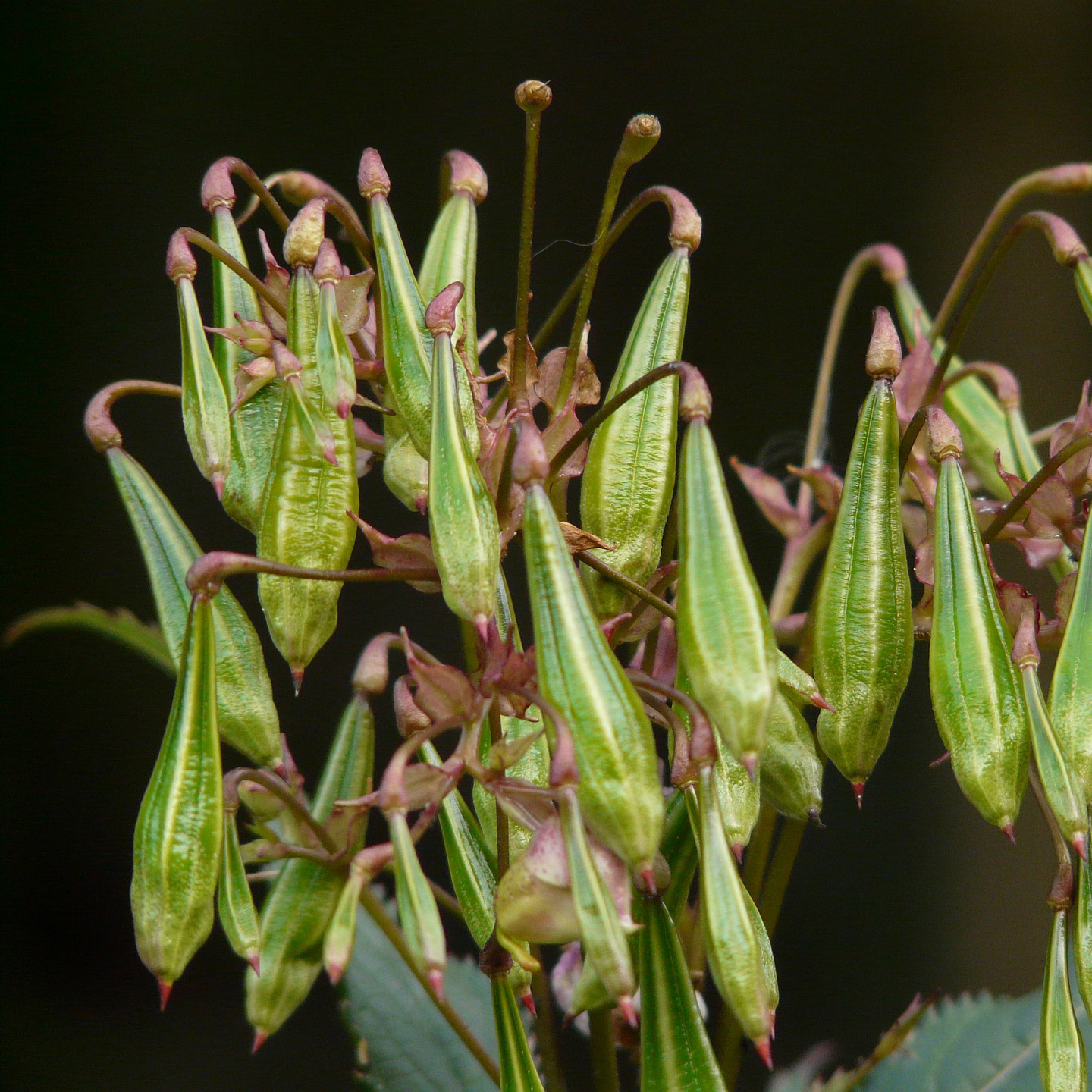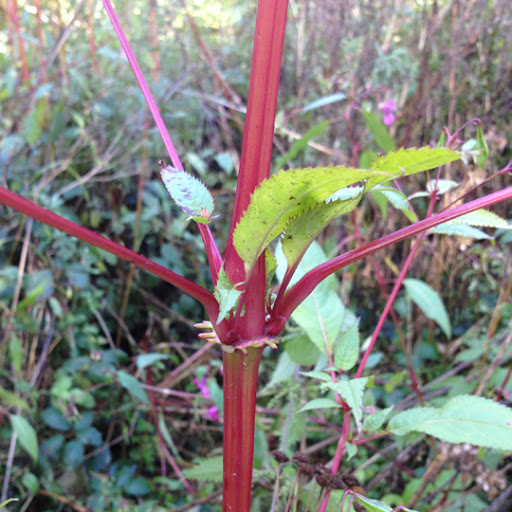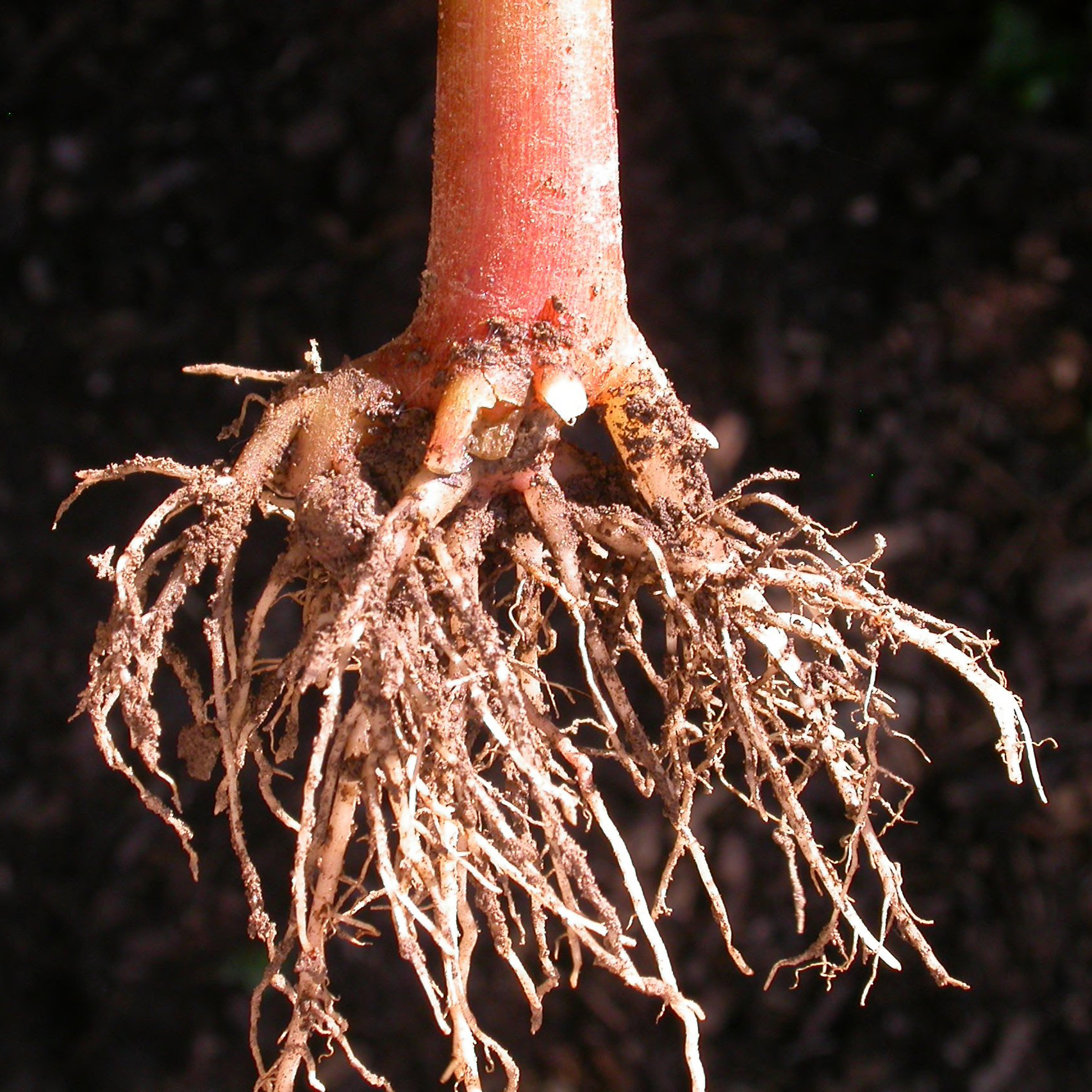Himalayan Balsam or Impatiens glandulifera is an invasive plant that was introduced to the UK in 1839 as an ornamental garden plant. The plant was native to the Himalayan region and grows rapidly causing issues for surrounding plants.
The plant forms dense colonies which suppress neighbouring plants by shading them out. This gradually causes impoverishment of the surrounding vegetation, killing off native plants and causing a decrease in biodiversity.
This has led to Himalayan Balsam being recognised as an invasive species and its presence on-site is often seen as an issue that needs to be resolved.
It’s important that you understand some key features that can help to identify the plant, although professional verification should be conducted before any removal plans are undertaken. Here are some of the key features to look out for:

The leaves are mid-green in colour and oval in shape with serrated edges. They often reach sizes of 15cm in length and form in opposites or clusters of 3-5.

Balsam flowers are pink/purple in colour and more rarely can be seen in white. They are shaped like a helmet and reach sizes of 3-4cm. They have a sweet-scented smell.

The pod is mainly green with a reddish-brown ting near the stem. The shape is that of water or teardrops and reaches sizes of 2.5cm in length. When the pod is ripe it will explode on touch, dispersing its seeds.

A fleshly hollow stem that can grow to lengths of 3 metres. In spring the stem has some green colour but is mainly a browny red throughout all seasons.

Himalayan Balsam roots are not strong and can be easily pulled from the ground. The short roots are clumped and resemble the root of an Onion. They also have side shoots that are green in colour with reddish stems.

The black, round seeds are 2-3mm in size.
Himalayan Balsam has escaped into the wild in the UK and is very common in Wales and England. It is less frequent in Scotland and western parts of Northern Ireland.
It can be seen growing in a variety of locations, but mainly along riverbanks or near other watercourses. When the plant begins to die back in the winter, they leave river banks bare which can lead to erosion or flooding.
Himalayan Balsam spreads via seeds, with each plant producing up to 800 seeds. These seeds are dispersed via exploding seed pods which can propel the seeds up to 6 metres. The seeds are also spread by humans and other wildlife by attaching them to clothes or fur. Due to their growth near rivers, Balsam seeds can also be transported downstream by floating in the water.
Seeds can persist in soils for around 18-24 months, however, there have been cases in which the seed persistence has reached up to three years.
Yes, it is illegal to plant or cause Himalayan Balsam to grow in the wild in the UK, as stated by the Wildlife and Countryside Act 1981.
Also, if Himalayan Balsam and associated material (e.g. soil) are taken away from its site of origin, it becomes a controlled waste and must be disposed of at a landfill site that is permitted to accept it, as stated by the Environmental Protection Act 1990.
There are several methods to eradicate Himalayan Balsam from development sites. When trying to eradicate Himalayan Balsam you should undertake actions before June as seeds should not be present and this reduces the risk of cross-contamination.
The most effective method in eradicating Himalayan Balsam from construction sites is to excavate the contaminated area down to depths of 6 metres. This ensures that any seeds that are left in the soil are removed. This excavated material needs to be sent to a permitted landfill to ensure seeds are not spread. The material can only be transported by a registered waste carrier.
The affected area may need to be excavated for up to 2 years because seeds can remain active in soils for up to 24 months. This only needs to be done if the presence of the plant has reappeared.
If non-chemical control is not suitable, an appropriate weedkiller can be used to eradicate it. Before using any chemical weedkillers alongside watercourses, you must contact the Environment Agency.
It can take a couple of seasons to ensure control of Himalayan Balsam as the seeds can still germinate after the parent plant has been killed.
Plant waste can be burned to kill the plant, but this must be conducted in a controller environment. You must inform the Environment Agency with at least a week’s notice and inform your local environmental health officer.
If you are a business, you will also need a registered waste exemption or environmental permit.
If you require disposal of soils contaminated with Himalayan Balsam rhizomes, we have partnered with permitted disposal sites. We aim to always have a local option for your invasive plant soils for the best price. Get in touch with the office on 0161 647 7490 or info@gmat.co.uk.